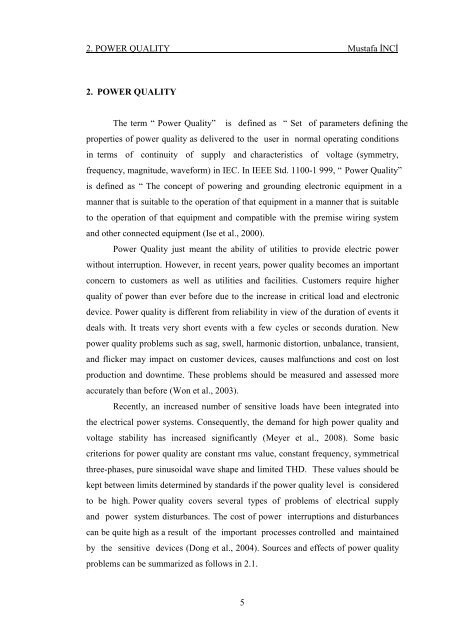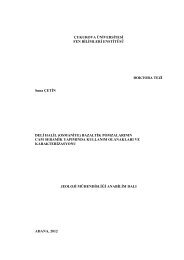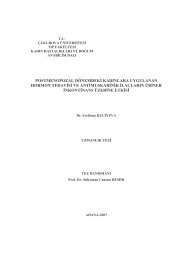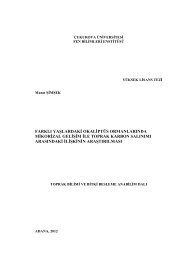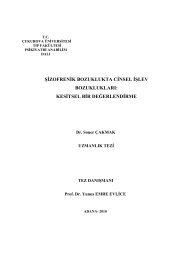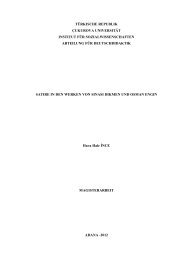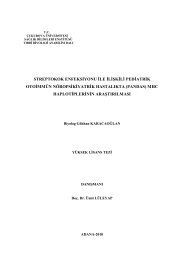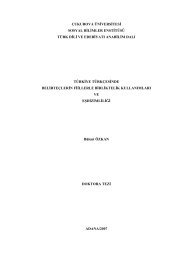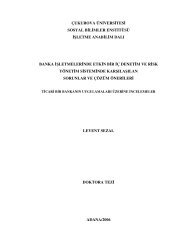ÇUKUROVA UNIVERSITY INSTITUTE OF NATURAL AND APPLIED ...
ÇUKUROVA UNIVERSITY INSTITUTE OF NATURAL AND APPLIED ...
ÇUKUROVA UNIVERSITY INSTITUTE OF NATURAL AND APPLIED ...
You also want an ePaper? Increase the reach of your titles
YUMPU automatically turns print PDFs into web optimized ePapers that Google loves.
2. POWER QUALITY Mustafa İNCİ<br />
2. POWER QUALITY<br />
The term “Power Quality” is defined as “Set of parameters defining the<br />
properties of power quality as delivered to the user in normal operating conditions<br />
in terms of continuity of supply and characteristics of voltage (symmetry,<br />
frequency, magnitude, waveform) in IEC. In IEEE Std. 1100-1 999, “Power Quality”<br />
is defined as “The concept of powering and grounding electronic equipment in a<br />
manner that is suitable to the operation of that equipment in a manner that is suitable<br />
to the operation of that equipment and compatible with the premise wiring system<br />
and other connected equipment (Ise et al., 2000).<br />
Power Quality just meant the ability of utilities to provide electric power<br />
without interruption. However, in recent years, power quality becomes an important<br />
concern to customers as well as utilities and facilities. Customers require higher<br />
quality of power than ever before due to the increase in critical load and electronic<br />
device. Power quality is different from reliability in view of the duration of events it<br />
deals with. It treats very short events with a few cycles or seconds duration. New<br />
power quality problems such as sag, swell, harmonic distortion, unbalance, transient,<br />
and flicker may impact on customer devices, causes malfunctions and cost on lost<br />
production and downtime. These problems should be measured and assessed more<br />
accurately than before (Won et al., 2003).<br />
Recently, an increased number of sensitive loads have been integrated into<br />
the electrical power systems. Consequently, the demand for high power quality and<br />
voltage stability has increased significantly (Meyer et al., 2008). Some basic<br />
criterions for power quality are constant rms value, constant frequency, symmetrical<br />
three-phases, pure sinusoidal wave shape and limited THD. These values should be<br />
kept between limits determined by standards if the power quality level is considered<br />
to be high. Power quality covers several types of problems of electrical supply<br />
and power system disturbances. The cost of power interruptions and disturbances<br />
can be quite high as a result of the important processes controlled and maintained<br />
by the sensitive devices (Dong et al., 2004). Sources and effects of power quality<br />
problems can be summarized as follows in 2.1.<br />
5


